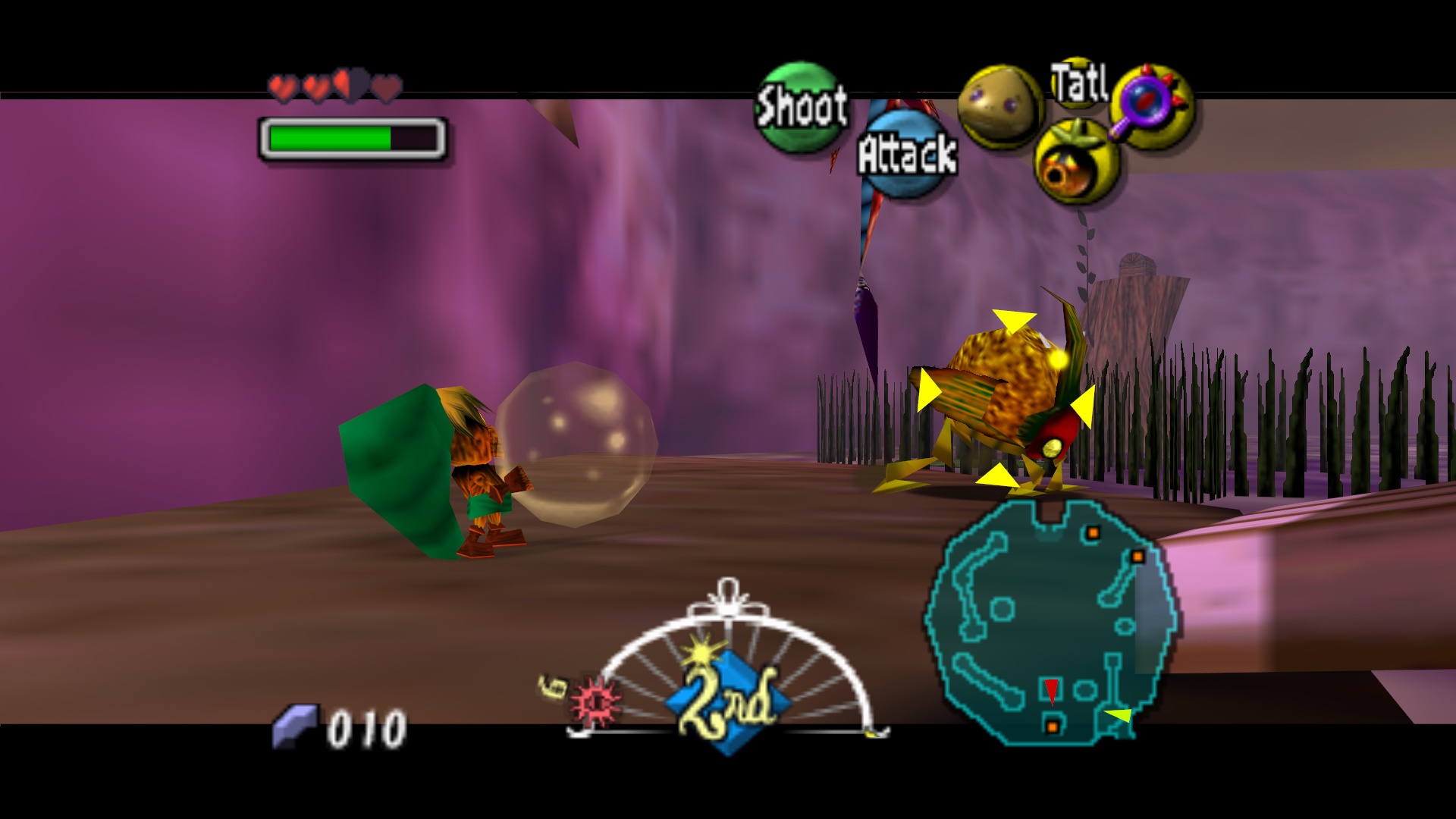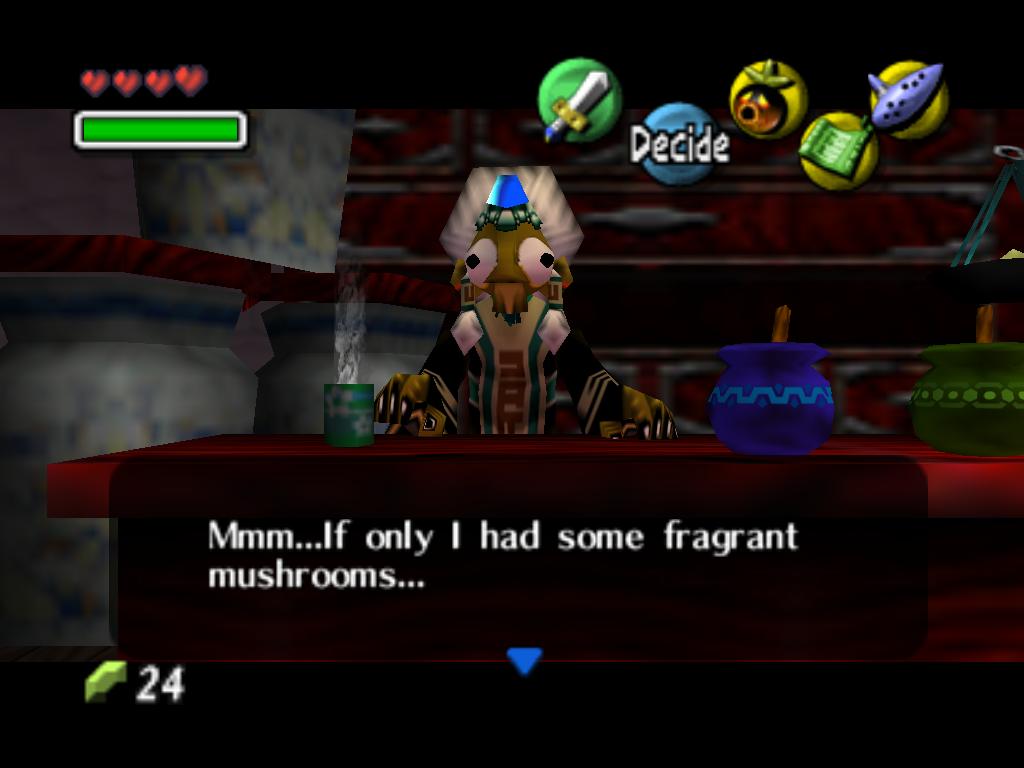The Legend of Zelda: Majora’s Mask is a 2000 action-adventure game developed and published by Nintendo for the Nintendo 64. It was the second The Legend of Zelda game to use 3D graphics, following Ocarina of Time (1998). Designed by a creative team led by Eiji Aonuma, Yoshiaki Koizumi, and Shigeru Miyamoto, Majora’s Mask was completed in less than two years. It features enhanced graphics and several gameplay changes, but reuses elements and character models from Ocarina of Time, which the game’s creators called a creative decision made necessary by time constraints.

The story takes place months after Ocarina of Time. Link arrives in a parallel world, Termina, and becomes embroiled in a quest to prevent the moon from crashing in three days’ time. The game introduces gameplay concepts revolving around a perpetually repeating three-day cycle and the use of various masks that transform Link into different forms. As the player progresses through the game, Link learns to play numerous melodies on his ocarina, which allow him to control the flow of time, open hidden passages, or manipulate the environment. Characteristic of the Zelda series, completion of the game involves successfully navigating through several dungeons that contain complex puzzles and enemies. Majora’s Mask requires the Expansion Pak add-on for the Nintendo 64, which provides additional memory for more refined graphics and greater capacity in generating on-screen characters.

The Legend of Zelda: Majora’s Mask is an action-adventure game set in a three-dimensional (3D) environment. Players control the on-screen character, Link, from a third-person perspective to explore dungeons, solve puzzles, and fight monsters. Players may direct Link to perform basic actions such as walking, running, and context-based jumping using the analog stick, and must use items to navigate the environment. In addition to wielding a sword, Link can block or reflect attacks with a shield, stun enemies by throwing Deku Nuts, attack from a distance with a bow and arrow, and use bombs to destroy obstacles and damage enemies. He can also latch onto objects or paralyze enemies with the Hookshot. These actions are aided by the “Z-targeting” system introduced in Ocarina of Time, wherein the player may lock the camera onto a particular character, object, or enemy and maintain it in view regardless of Link’s motion through the environment. Similar to other games in the series, Link must progress through a variety of dungeons, which include numerous puzzles that the player must solve. Dungeons also contain optional puzzles that award collectible fairies, which grant Link additional abilities when all are gathered. As a direct sequel to Ocarina of Time, the first 3D title in the series, the game retains its predecessor’s gameplay systems and control scheme while introducing new elements including character transformations and a three-day cycle.
#gaming #games #ratinggames #legendofzeldamajorasmask #actionadventure
